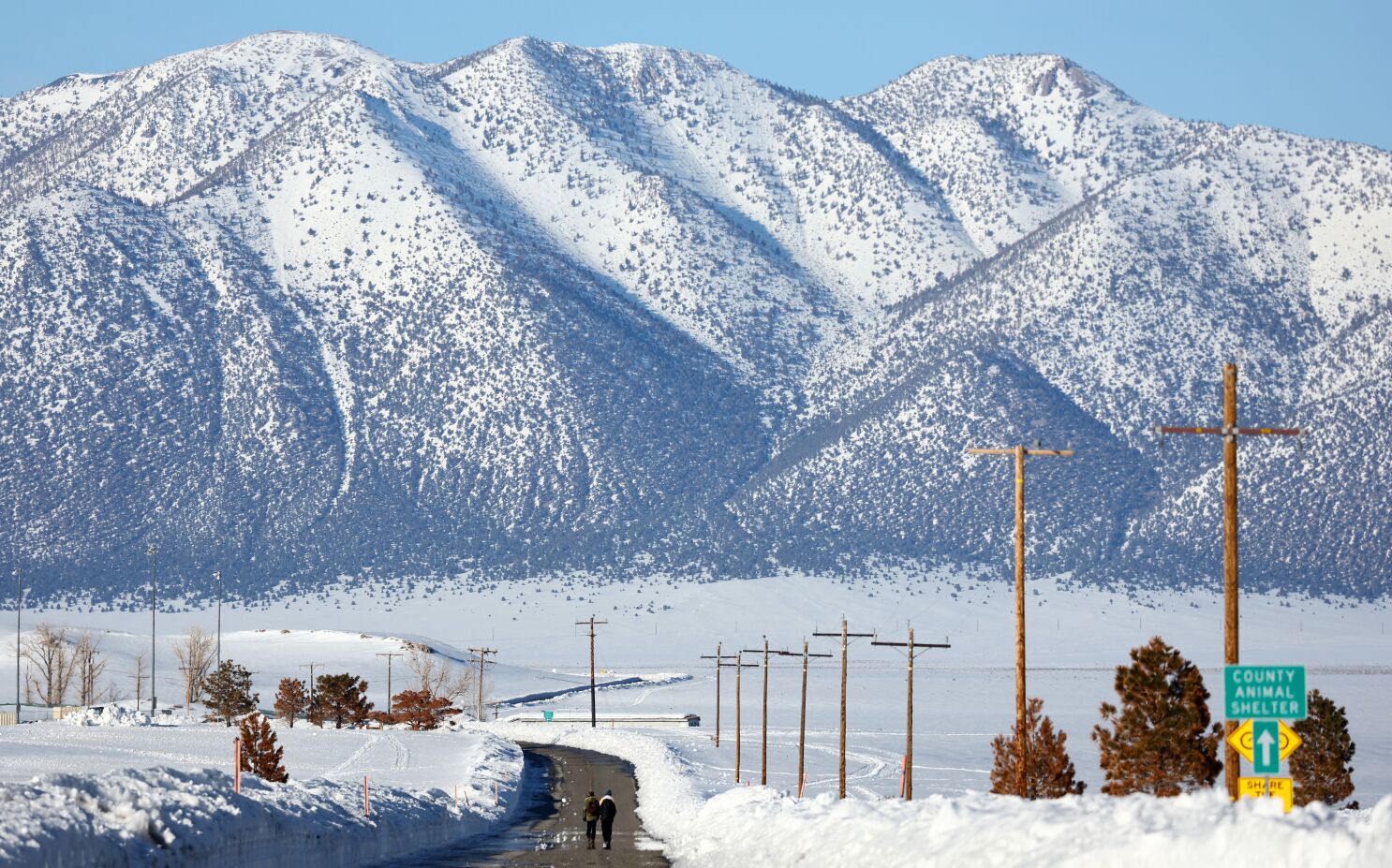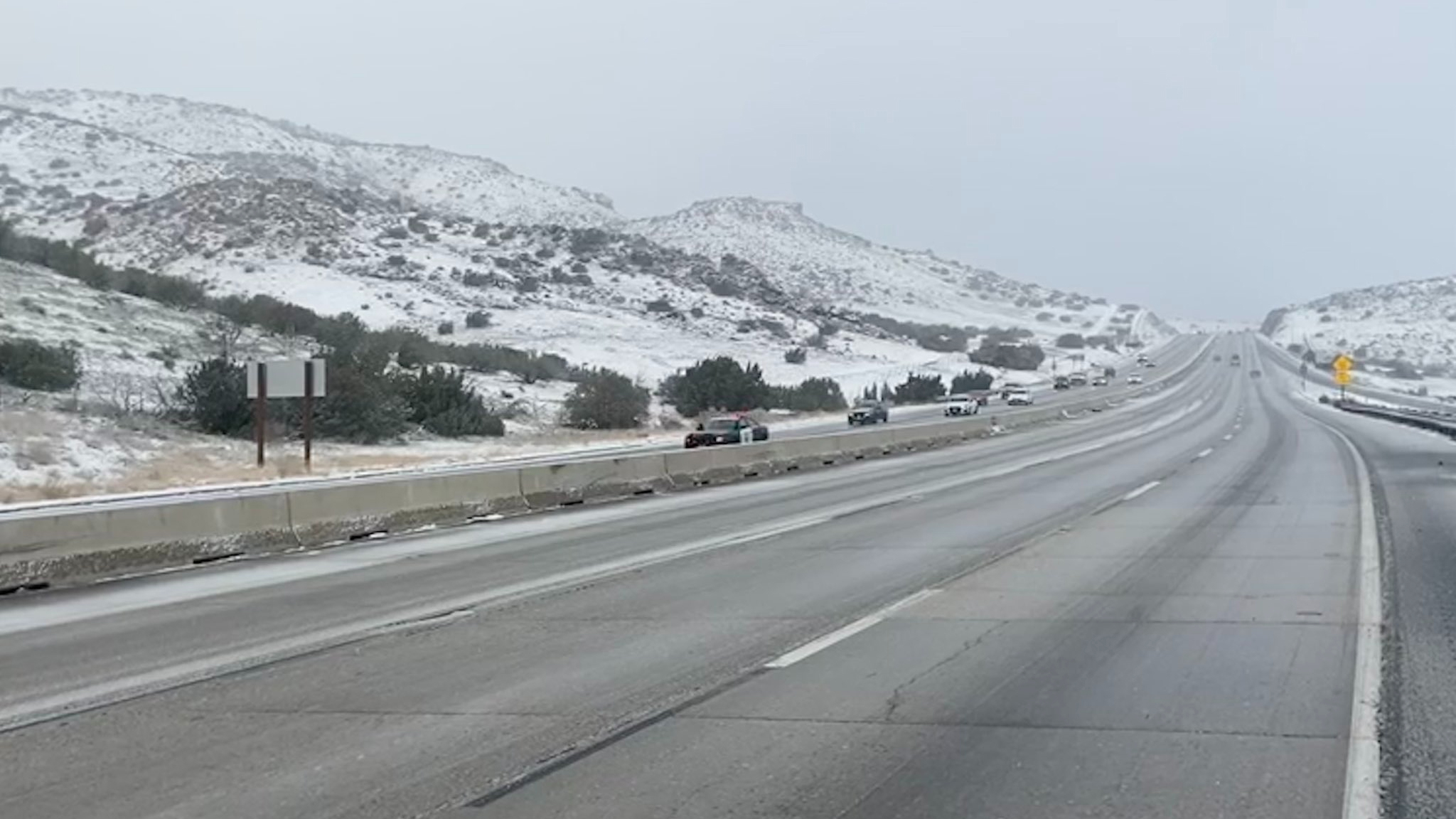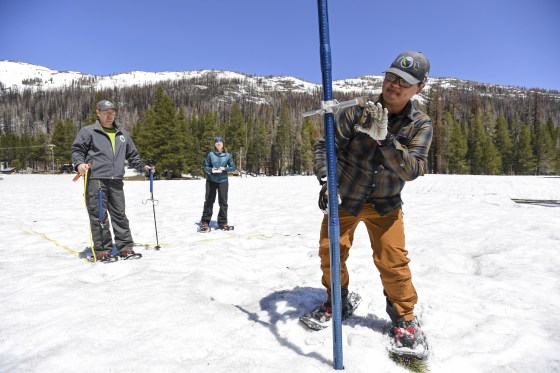In a spring storm, Southern California experiences snow, rain & tiny tornadoes
In an effort to break the grip of an unusually rainy winter, a storm that was uncommonly cold Thursday dumped torrential rain in some areas, caused two tiny tornadoes, and covered the mountains in Southern California with snow. The National Weather Service stated that Mount Wilson, located 15 miles northeast of downtown Los Angeles, had received more than 4 inches of new snow.
Mountain ranges across three counties were the subject of winter weather alerts.
The highest peaks might receive 14 inches, according to forecasters. Overnight, the majority of the storm passed across Southern California. But as a thunderstorm moved through Los Angeles County late in the morning, the weather service issued a warning for winds as high as 50 mph and hail.
The meteorological service reported a “brief EF0 tornado” that occurred near suburban Carson on Thursday morning. Later, it reported a second EF0 tornado that occurred in the Compton region, a few miles to the east of the first one. The Enhanced Fujita Scale’s lowest category, an EFO tornado normally has winds between 65 mph and 85 mph.
The weather service’s Los Angeles office posted on Twitter, “Based on broadcast media video, there was minor damage to buildings, vehicle damage from debris, and tree damage.” TV reports displayed various commercial and industrial building roofs that had been pulled off. There were no reported injuries. The damage did not seem to be as severe as the devastation caused by the storm in March in LA County.
Earlier in the week, Northern California had rain and snow showers as the storm’s center moved around off the San Francisco Bay area.
It was predicted that the northern hemisphere’s weather would continue to be chilly and unsettled, with sporadic showers, thunderstorms, and late-season snowfall that would accumulate just somewhat at higher elevations.
Before back-to-back atmospheric rivers and a blast of arctic air dumped enormous amounts of rain and snow between late December and March, creating a massive Sierra Nevada snowpack, California appeared to be entering a fourth year of devastating drought.
Agricultural lands in the San Joaquin Valley below the southern Sierra have flooded due to storm runoff. However, the substantial snowpack has not yet begun to melt. The snowpack has melted at a slower rate than usual because of average temperatures early in the month and cloud cover, according to the state Department of Water Resources, despite a small rise in temperatures in late April.
Read more: UNEXPLODED BOMBS FROM WORLD WAR II WERE FOUND CLOSE TO POPULAR OAHU BEACHES



